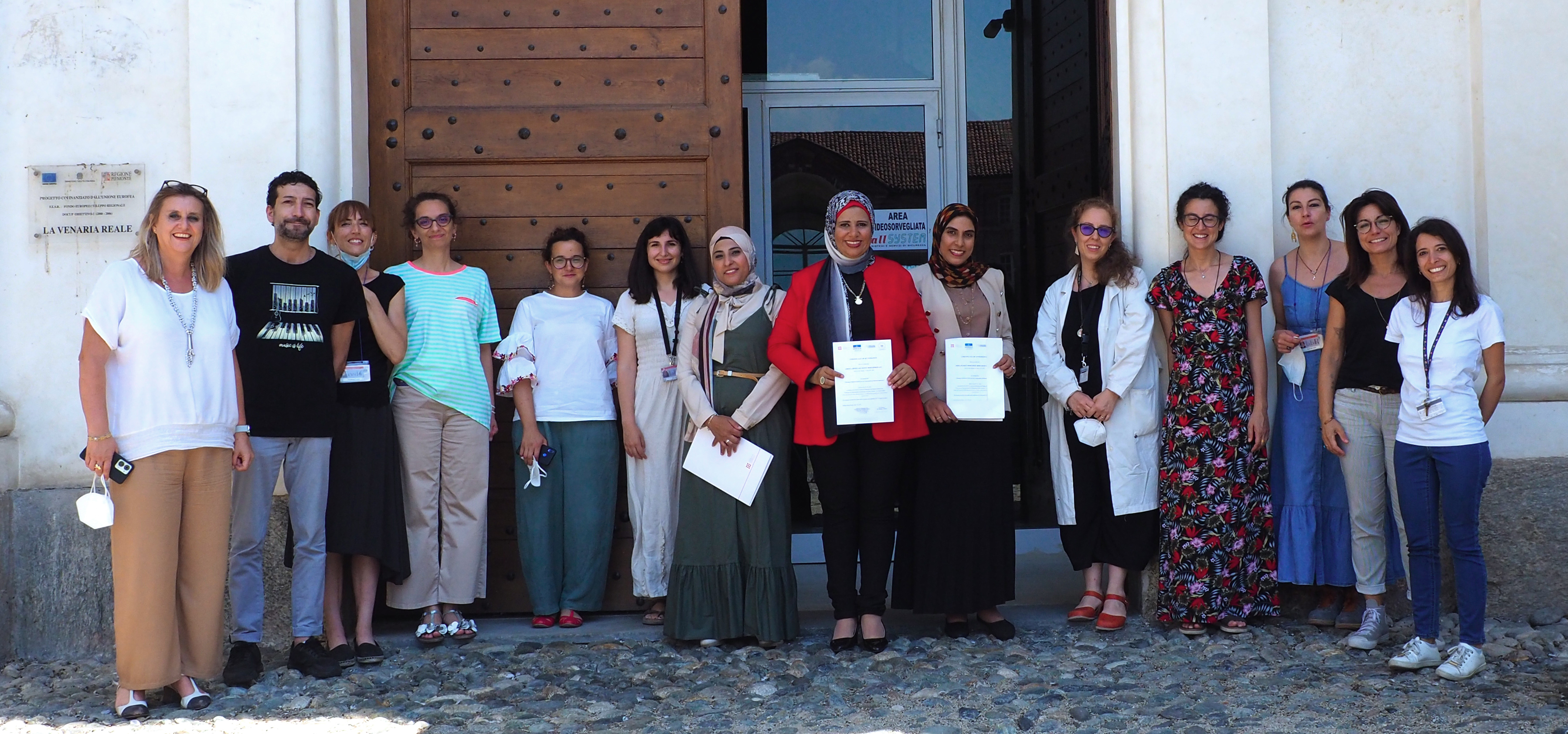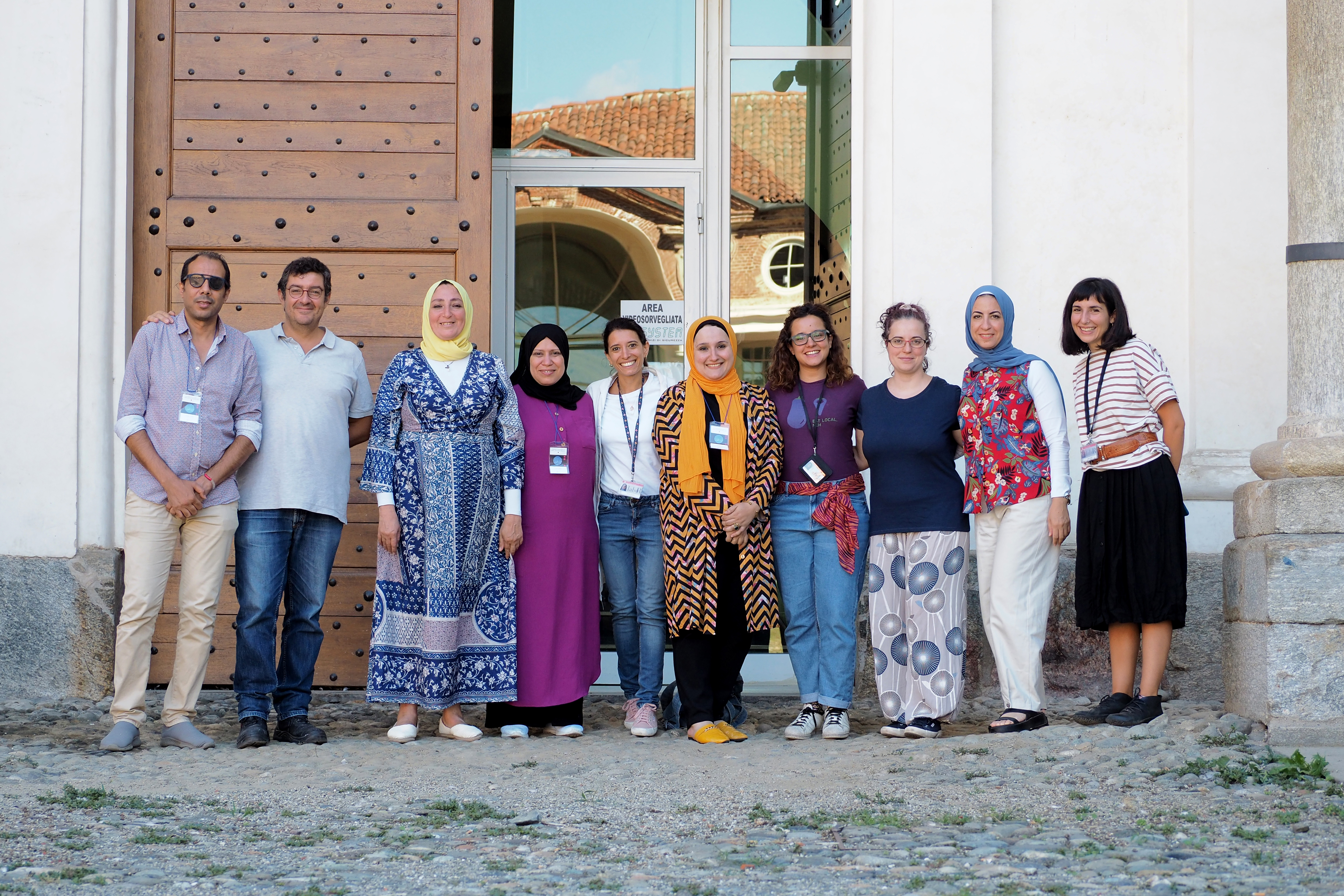Within the framework of the Museums of Islamic Art (MIA) project, funded by UNESCO/Italy Funds-in-Trust, UNESCO Cairo Office in cooperation with the Egyptian Ministry of Tourism and Antiquities (MoTA) and in partnership with The Conservation and Restoration Center La Venaria Reale (CCR), CCR has hosted 10 conservators from the NMEC - National Museum of Egyptian Civilization, the MIA - Museum of Islamic Art, the Manial Palace and the Gayer and Anderson Museum in Cairo from 4 to 15 July and from 5 to 20 September 2022.
The MIA project aims to assist the Museum of Islamic Art (MIA) in developing as a center for excellence in the conservation of Islamic arts and support the capacity building of the participating museums selected by MoTA.
"This project represents an important new exchange of expertise and growth for the CCR, with the opportunity to make available and compare established methodologies and practices in Italy with a view to building together new ways of intervening and studying the techniques and materials that are the focus of MoTA's attention" Stefano Trucco, president of the Conservation and Restoration Center "La Venaria Reale".



The training program proposed by CCR was developed in two parts; the first, in July, was dedicated to Materials Science and attended in presence in Venaria by 5 conservators and curators, and online, on the CCR Digital Lab platform, followed by 25 MoTa conservators.During the first training, theoretical scientific and technical insights were combined with the sharing of case studies, experiences and projects that could highlight the integrated methodological approach that guides conservation actions.The lectures, conducted by conservation scientists (biologists, chemists and technicians) and conservators specializing in different types of works of art, deepened the knowledge of the works, the materials that compose them, the analytical techniques of investigation and the systems of monitoring and control of conservation actions, offering the conservators involved the opportunity to have as broad and diverse a view as possible of theskills for the conservation of cultural heritage from the applied Italian experience to the Egyptian one.
The second training, dedicated to the conservation of books and archival materials, was held in the same blended formula, in presence and online, for another 35 conservators.The lectures were taught by a multidisciplinary team of conservators specialized in paper, leather, and parchment, together with conservation scientists (biologists, chemists, technicians), and experts from national and international cultural institutions, including the CCR personnel, the Italian Ministry of Culture Central National Library of Florence/Opificio delle Pietre Dure, Marciana National Library in Venice, National Archive and Royal Museums of Turin, Royal Library and Senate House Library in London.



The online session mainly focused on the risk assessment and challenges in preserving archive materials and books, agents of deterioration, principles, and practices of preservation in museums and archives, and preventive conservation approaches.
The second session was carried out at the CCR laboratories and allowed 5 conservators to improve a combination of different but interconnected knowledge, skills and competencies, and practice in processing and preserving leather, parchment and paper, and in making different types of conservation wrappers.
The training contributed not only to strengthening the capacity of the Egyptian museum professionals but also to building a fruitful partnership between Egypt, Italy, and UNESCO for international cultural cooperation.